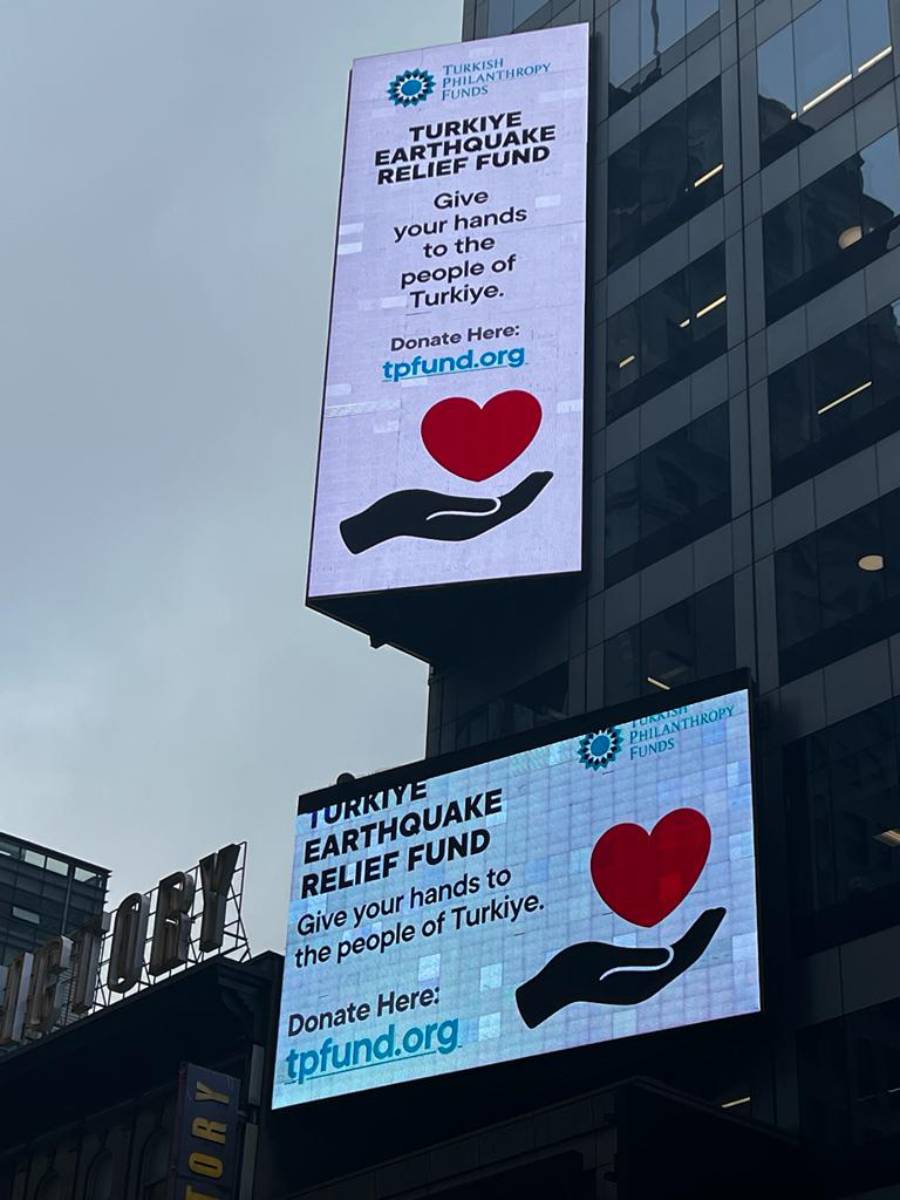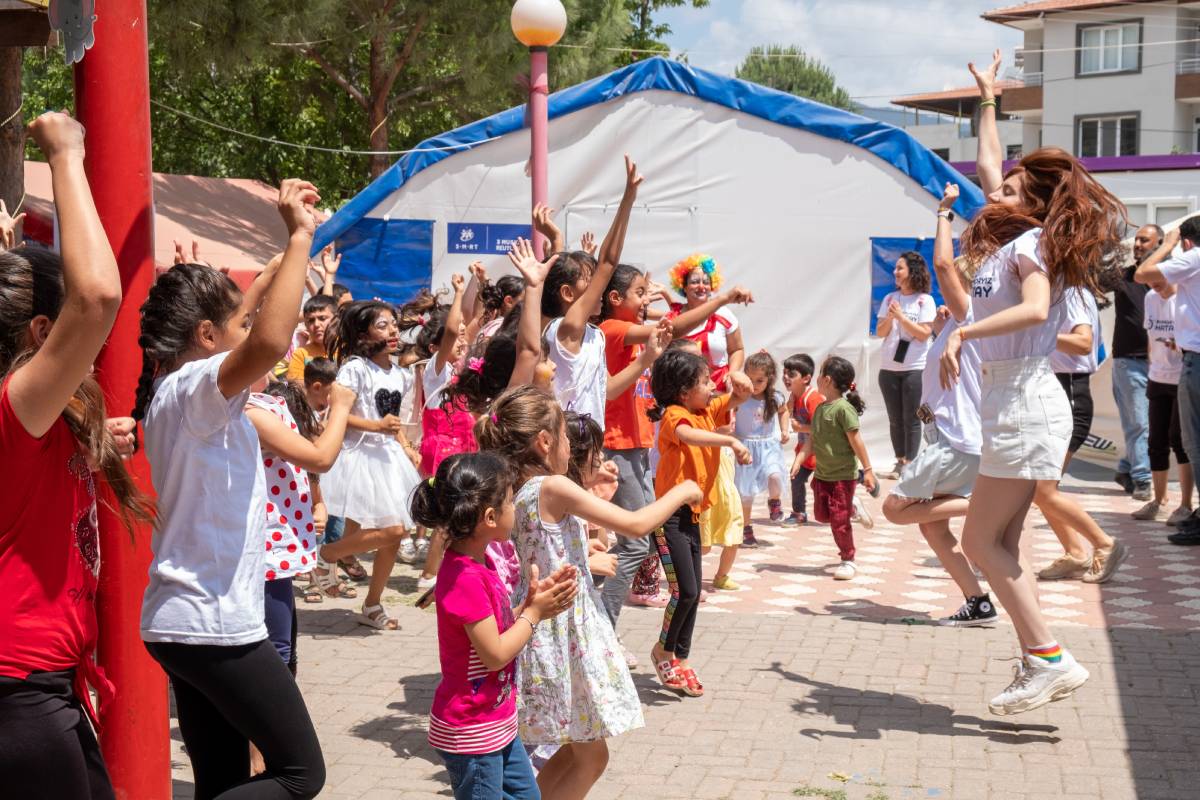Submitted by Mert Kansu
TPF Benchmarks Recovery Efforts in Türkiye a Year After The 2023 Earthquake
United States Architecture News - Mar 24, 2024 - 14:08 1211 views

A year after the earthquake, Türkiye is still working on recovering from the 7.8 magnitude earthquake that struck Türkiye and northern Syria in February, 2023. The catastrophe killed over 50,000 people in Türkiye alone in the Britain-sized disaster zone, with more from surrounding countries1. After months of disaster response by local and foreign governments, NGO’s and other volunteers around the world, the marks of the earthquake are still very fresh, and visible. While many families, over three million, were able to relocate to other cities, towns, and few who were lucky to have the means of rebuilding their homes, some are still awaiting permeant housing2. There are currently 689,101 people living in 407 container cities across the disaster zone in Türkiye, according to the latest figures from Türkiye’s disaster agency AFAD1. The container cities range from size to size, however most of them are densely packed, mostly on sites of previous factories and farm lands. Although they provide many amenities that a small town would, ranging from, police departments to grocery stores, barbershops and mosques, they are set up to serve the residents only for a limited time. As rebuilding efforts for permanent housing lingers, the living conditions in these towns start to wear down the families, who are already healing from what is most possibly the biggest trauma they’ve experienced so far.

Image courtesy of: Toplum Gönüllüleri Vakfı
The emotional, economical and physical load for the disaster victims to carry is undoubtfully heavy. Aid, funding, recovery programming from organizations and governments around the world are still actively working on the region. One of these organizations, Turkish Philanthropy Funds (TPF) is a community foundation based in United States, and has been heavily involved with response and recovery efforts since the early hours of the earthquake. After a year, TPF evaluates their performance, goals and efforts to benchmark the work they’ve done, and work yet to be done. In a recent interview with TPF’s Executive Director, Senay Ataselim, discussed TPF’s efforts so far, and steps they are taking to ensure the funds they collect are allocated effectively.

Image courtesy of: Turkish Philanthropy Fund
Since the earthquake, TPF has raised over $20 million of funds and allocated $14.4mil to 72 organization in the affected region. This was achievable by both having a robust community and supporter network, and strategic outreach. From the first moments of the Earthquake, TPF have reached out to media outlets, accepted interviews, placed in-kind ads on billboards, public transportation and even Times Square in New York City to provide visibility to the situation in Türkiye. The Foundation has also reached out to its community, and used their network and connections as well to spread the news as fast as possible. The approach proved its success due to TPF’s standards, and many third party verified certifications and accreditations it has. As a result, over 60% of the total funds have been made non-Turkish communities living in US. These funds along with others were channeled in 3 categories: Short-term, Resiliency and Long-term funds. While short-term funds ensure victims receive the emergency and immediate support they need to sustain their daily needs, long-term funds are given over 2-3 years and up to $1 million per organization. Resiliency funds on the other hand, focuses on funds that target supporting the region, and the people in educating, and preparing for future disasters and crises. As an organization operating since 2007, and have a vast network of partners, TPF was able to get real-time information and data, and efficiently allocate funds starting from the day of the earthquake. Building this network of partners and allies has not been one that is easy. TPF values trust in everything they do, and this trust enables them to act quickly using their network, however for them, trust needs to be built on accreditable data, and action. All of TPF partners need to go through a strenuous eligibility process, moreover, donors’ funds are ensured by “traceable accountability”. This is a concept TPF believes in strongly, and means that the systems that needs to be in place by all the partners should allow donors to track their funds from start to finish.
Image courtesy of: Toplum Gönüllüleri Vakfı
Recently the sprawling temporary housing settlements and rebuilding efforts has been a part TPF’s focus, as this has become an increasing concern3. To protect urban and natural landscape of cities in the region, TPF has partnered with Turkey Mozaik Foundation and Turquoise Coast Environment Fundbased in UK, which will focus on protecting the landscapes in the coastal towns within the affected region. With the newly occurring stressors affecting not only environment but also the people, TPF has focused their affords under 4 main topics: education for resilience, economic development, psychosocial support, and support for children with disabilities.

Image courtesy of: Buradayiz Hatay
It is without suspicion that both urban and natural landscape of the affected region has been heavily damaged during and after the earthquake. The victims continue to suffer, whether it is economical, psychosocial or physical. And although there are new concerns and dangers that rise as Türkiye navigates how to best reach full recovery, organizations like TPF are a glimmer of hope for better things to come. Even though sociopolitical environment change, and affect recovery trajectory quickly in a country like Türkiye, currently, TPF predicts full recovery can take a decade, but people will be experiencing big changes in their living conditions in the coming few years.
Image courtesy of: Anne Cocuk Egitim Vakfi
Endnotes:
1. Keddie, P. (2024, February 6). The firats survived Turkey’s earthquakes, here’s their life a year later. Al Jazeera. https://www.aljazeera.com/news/2024/2/6/the-firats-survived-turkeys-earthquakes-heres their-life-a-year-later
2. Erem, O. (2023, February 5). 6 şubat depremleri Sonrası Erdoğan’ın Konut Vaadi neydi, Bir Yılda Verilen sözler tutuldu mu? BBC News Türkçe. https://www.bbc.com/turkce/articles/cd19jw0dxy6o
3. Kara-Kaşka, M. (2023, May 5). Deprem Bölgesinde Enkaz Atıkları Sorunu: “Zeytin Ağaçlarının üzerine Molozların Döküldüğünü gördüm.” BBC News Türkçe. https://www.bbc.com/turkce/articles/czvk4p1yv7yo
Top image in the article, courtesy of: Suna'nin Kizlari.
